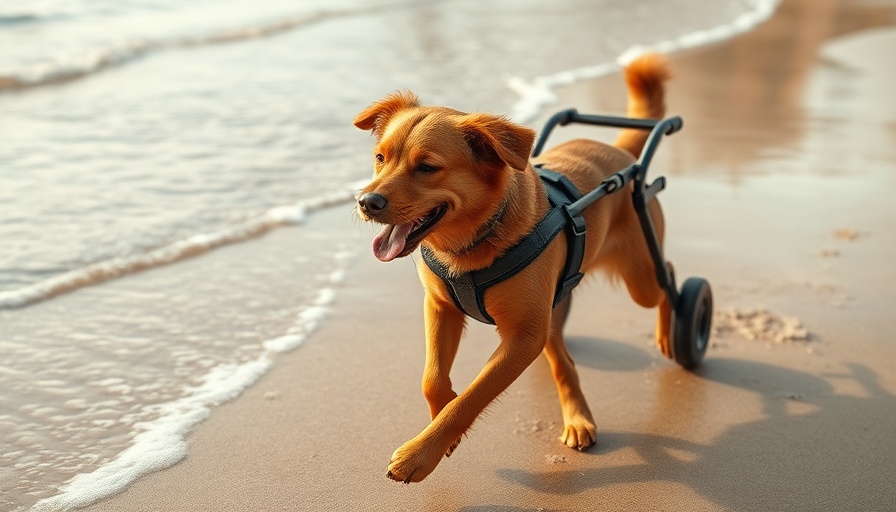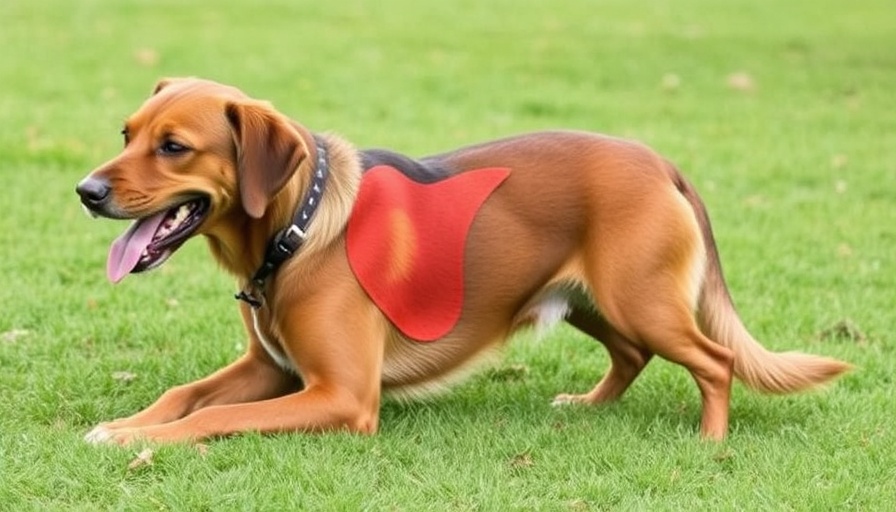
Understanding Leg Tremors in Dogs: More Than Just Shaking
As responsible pet parents, it’s vital to understand the signs our furry companions exhibit. One concerning sign many dog owners can face is leg tremors, specifically if their dog’s back legs begin to shake involuntarily. While random trembling may not always be alarming, it’s crucial to recognize when such behavior could indicate underlying health issues. In this article, we will delve into the various reasons behind leg tremors, helping you identify when to seek veterinary advice.
What Causes Dog Leg Tremors: Common Factors Explored
Leg tremors can arise for several benign reasons, but identifying the cause is essential. Whole-body shaking could occur due to fear from loud noises or cold weather, which usually subsides once the dog is in a comfortable environment. Age-related tremors are often benign and linked to musculoskeletal changes as dogs grow older. If you notice intermittent leg trembling, however, this could indicate a need for attention, especially if it interferes with your dog's mobility.
Signs of Underlying Health Issues to Watch For
While occasional leg tremors may not require immediate concern, consistent or severe shaking can point to significant health issues. Pain from arthritis or a torn ligament can trigger shaking, further affecting your dog’s movement. A check-up with a veterinary expert could help clarify whether discomfort from such conditions is causing your dog’s leg tremors.
Neurological Conditions: When to Seek Expert Help
Persistent leg tremors warrant a detailed neurological examination. Conditions such as degenerative myelopathy or shaker syndrome, predominantly affecting certain breeds, often present with shaking legs as an initial symptom. Engaging with veterinary neurologists is wise when leg tremors impede your dog’s ability to stand or walk comfortably, as this could signal important communication issues between the spinal cord and the brain.
Potential Causes of Paralysis and Responsive Shaking
In cases where dogs are paralyzed, leg tremors can occur during healing processes. Although frightening, these shaking episodes show muscle responses and nerve signals returning. Managing a paralyzed dog presents challenges but observing your pet’s progress is vital for their recovery, especially in rehabilitation settings.
Recent Advances in Understanding Canine Tremors
Veterinary medicine continues to make strides in better understanding canine health issues, including reasons behind leg tremors. Understanding their origins promises advances in treatment, allowing practitioners to offer various therapeutic options that not only focus on pain management but also on enhancing mobility and overall wellbeing. For those in the pet nutrition or accessory development sectors, consider researching products that may specifically assist dogs experiencing these symptoms, providing additional support on their path to recovery.
Emotional Impact on Pet Owners: Coping and Comfort
Seeing your beloved companion experiencing discomfort can be heart-wrenching. As advocates for pet health, our community plays a vital role in ensuring pet parents have the resources they need to understand and address their pets’ fluctuating health. Regular communication with veterinarians and participation in supportive community initiatives can empower owners, thereby nurturing a collaborative culture dedicated to pet health.
Actionable Insights for a Healthier Pet
To ensure your dog’s wellbeing, remain observant of any behavior changes. Develop a routine for vet visits and consider keeping a journal to track your pet’s health patterns. Resources like local support groups for pet owners can provide additional insights and foster solidarity. Bringing this knowledge back to your community, whether through pet training programs or grief counseling, amplifies efforts toward healthier, happier pets.
Taking action when your dog experiences leg tremors is crucial. Engage with your veterinarian to accurately identify and treat underlying conditions that could be affecting your pet. The love and care you provide can make all the difference in their lives, and addressing health issues promptly will help ensure a joyful and healthy life for your furry friend.
 Add Row
Add Row  Add
Add 




Write A Comment